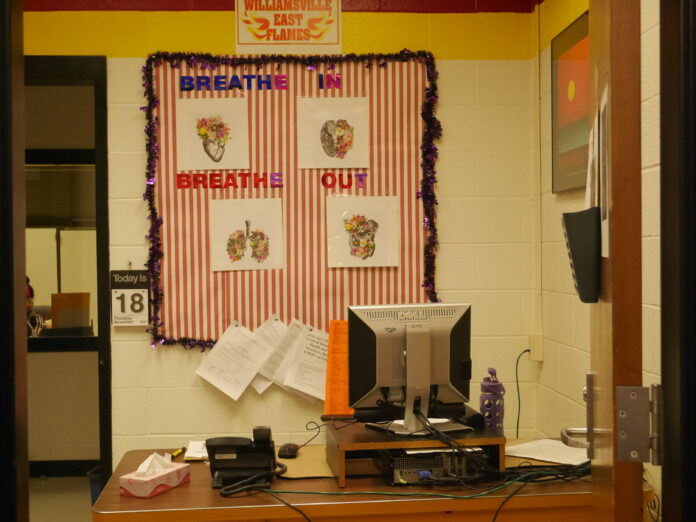By Mariel Gousios
According to Nicole Lyn Pesce, in her article for Market Watch, 7 in 10 parents admit to sending sick kids to school even though they know they’re ill. In addition, more than a third of the parents believe that it spread throughout the school as a result. The report said school pressures are the reason why. In academic students, there’s pressure to not miss any day of school in fear that they’ll fall behind. The same is true for the busy and academic students of East. As flu and cold season are in full swing, students are coming into school sick. It’s showing ever-increasing importance for flexible lesson planning, where sick kids could stay home because they can still learn online.
Recently, just like the rest of the school, I came down with a cold. It wasn’t anything serious, just a stuffy nose and a sore throat. However, on the first day I came down with it, I knew I couldn’t go to school. When my parents heard we were required to send proof of a negative covid result before I was allowed back into the school I was faced with a decision. I’d need to either spend hundreds of dollars on a rapid covid test or skip three days of school while I waited for a traditional one. Ultimately, with a test and a quiz coming up, my family decided to spend the money to get me back into school quicker. With more and more people realizing that they need to get a negative covid test before they return to school, there’s a possibility that they’ll start going to school even more when they’re sick.
Nationwide Children’s Hospital recommends that every person who affects the health and safety of the other students at school stays home. However, not all cases are this simple. For more blurred situations, Nationwide has some tips. First, look for signs of illness. If you have clear signs of illness, such as fatigue, major cough, fever, shortness of breath, etc., you should stay home.
Additionally, you should not return to school until 24 hours after symptoms stop. To further encourage students to stay home when sick, teachers may want to start having online friendly lesson plans. After a year of optional online learning, teachers should be relatively familiar with this. With available online resources, students can stay home when they are sick and only come back when they know they do not have covid-19 and are symptom-free. After the pandemic, public health is being seen in a new way.
Even with in-person learning, there may be a need for online alternatives so students can continue getting the education they deserve without risking the health of others.

